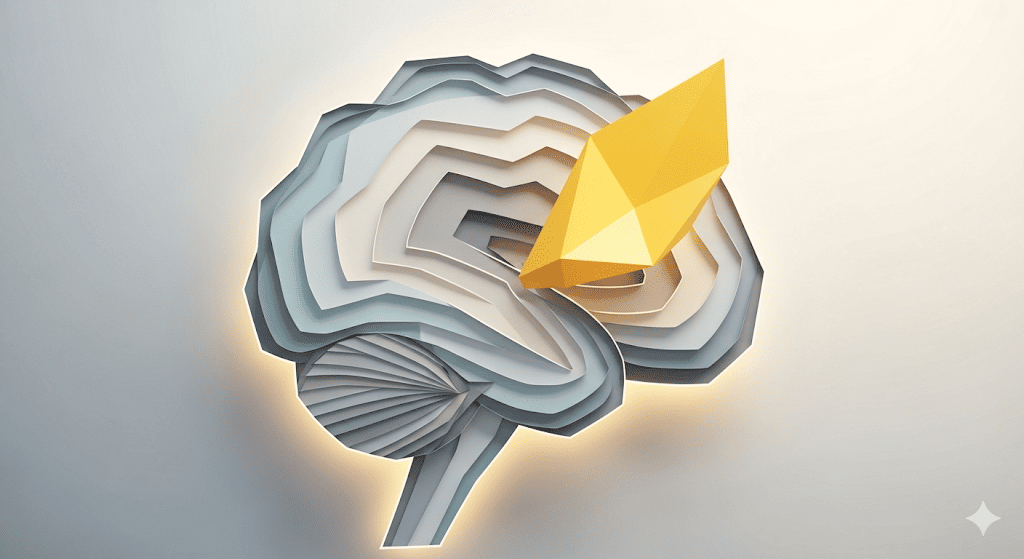Best ADHD Nootropics (2025): Evidence‑Based Options & Smart Stacks

A practical 2025 guide to ADHD‑friendly nootropics. What actually has human evidence (L‑theanine, phosphatidylserine, omega‑3s), how to stack them smartly, and where they fit alongside standard care—plus shop the exact ingredients from Nootropix.
Quick take: Stimulants remain the first‑line ADHD treatment, but a few non‑prescription options (e.g., omega‑3s, L‑theanine, phosphatidylserine) show targeted benefits for attention, sleep, or complementary support—use them to fine‑tune focus alongside lifestyle and clinical care. [Ref 1, 2]
ADHD at a glance
ADHD is a neurodevelopmental condition involving dysregulation of dopamine and norepinephrine signaling across attention networks.
Diagnosis follows DSM‑5 criteria via a clinician. Symptoms often persist into adulthood and can affect work, study, and relationships.
Standard ADHD treatments (and why some look beyond them)
Large comparative analyses consistently find stimulants effective and generally well‑tolerated (methylphenidate tends to lead in children/teens; amphetamines in adults).
Still, not everyone responds or tolerates side effects (e.g., sleep disruption, appetite loss), and some prefer to add non‑prescription tools for specific problems like anxiety or sleep. [Ref]
Nootropix note: We do not sell prescription stimulants or modafinil. Always work with your clinician for diagnosis and medication decisions.
Could nootropics help with ADHD?
Short answer: some can help with specific targets (sleep quality, sustained attention, task initiation), but they’re not substitutes for medical care. Below are options with human evidence and pragmatic ways to use them.
1) L‑Theanine (± caffeine) — calm focus & better sleep
- Why consider it: May smooth anxiety and improve sleep efficiency; small trials in boys with ADHD reported better objective sleep. Many also pair it with caffeine for steadier alertness. [Ref]
- How people use it: 200–400 mg L‑theanine alone, or 1:1 with 100–200 mg caffeine (earlier in the day).
- Shop it: L‑Theanine 200 mg Capsules | Caffeine L‑Theanine Capsules
2) Phosphatidylserine (PS) — attention & working memory
- Why consider it: RCTs in children suggest improvements in inattentive symptoms and short‑term auditory memory; effects are modest but meaningful for some. [Ref]
- How people use it: 100–300 mg/day (often divided).
- Shop it: Smart PS™ Capsules
3) Omega‑3 fatty acids — foundational brain nutrition
- Why consider it: Meta‑analyses show small but significant reductions in ADHD symptoms, with better results when EPA is emphasized. [Ref]
- How people use it: Often 1–2 g/day combined EPA/DHA (clinical dosing per clinician guidance).
4) Choline donors — for racetam stacks & “brain energy”
- Why consider it: Racetams are commonly paired with a choline source to support acetylcholine and reduce “racetam headaches.”
- How people use it: Alpha‑GPC 300–600 mg/day; CDP‑Choline 250–500 mg/day; or the Choline Stack.
5) Racetams — advanced experiments (with caution)
Piracetam, Aniracetam, Fasoracetam. Evidence in ADHD is limited; most data are mechanistic or in other populations.
A small pharmacogenomic study in adolescents suggests fasoracetam may help a subset with specific glutamatergic gene variants; this is preliminary, not a general ADHD recommendation. [Ref]
- Piracetam 800–2400 mg/day
- Aniracetam 750–1500 mg/day
- Fasoracetam 20–40 mg/day
- Optional alertness aid (not an ADHD treatment): Fladrafinil, used sparingly and not late in the day.
6) N‑Acetyl‑L‑Tyrosine (NALT) — “do‑the‑thing” days
- Why consider it: Dopamine/norepinephrine precursor that some find helpful for task initiation under stress or sleep loss (evidence in ADHD is limited).
- How people use it: 300–700 mg as‑needed (avoid late evening).
- Shop it: NALT 350 mg Capsules
Build a simple, sensible ADHD‑friendly stack
- Morning: Caffeine + L‑Theanine (1:1) for smooth alertness.
- Core support: Add Alpha‑GPC or CDP‑Choline (especially if you trial a racetam).
- Evening: L‑Theanine alone for wind‑down if sleep is an issue.
- Nutrition: Ensure daily omega‑3s (food or supplement).
- Optional experiments: Consider Piracetam or Aniracetam with choline support; advanced users may explore Fasoracetam cautiously and with medical guidance.
FAQs
Are nootropics a replacement for ADHD medications?
No. Stimulants and atomoxetine have the strongest short‑term evidence for core ADHD symptoms. Think of nootropics as targeted complements for sleep, calm focus, or cognitive stamina. [Ref]
What about modafinil/adrafinil/fladrafinil?
Modafinil is prescription‑only and not approved for ADHD in most countries. Adrafinil/fladrafinil are non‑prescription eugeroics that some use for alertness; they’re not treatments for ADHD. Start low and avoid late dosing; consult your clinician.
What else moves the needle?
Regular exercise, consistent sleep, and structured routines.
For diet, prioritize protein, fiber, and omega‑3s; reduce excessive sugar/ultra‑processed foods.
About Nootropix: Dubai‑based since 2018, we ship same‑day across the UAE and fast internationally. Explore single ingredients to build your own stack—or start with our ready‑made bundles.